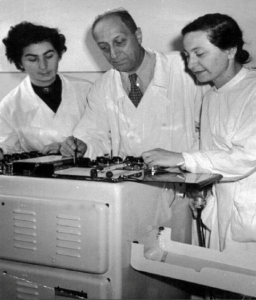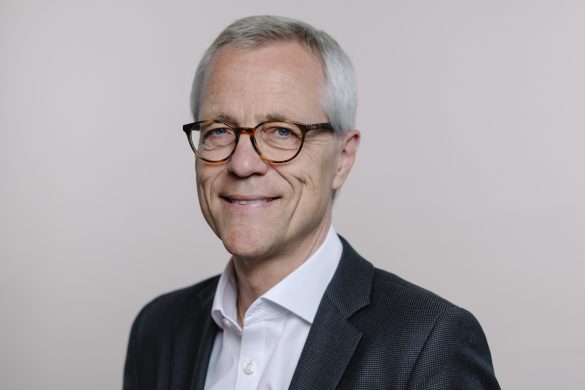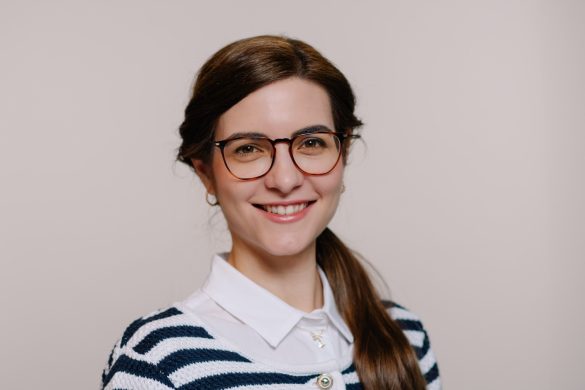Georgia (Georgian: საქართველო, Sakartvelo) is a country located at the intersection of Eastern Europe and West Asia, and generally considered to be part of the European continent. To the west it is bordered by the Black Sea, to the north and northeast by Russia, to the south by Turkey and Armenia, and by Azerbaijan to the southeast. Georgia covers 69,700 square kilometers of land, and has unparalleled natural beauty. The mountains occupy two thirds of Georgia. In the south there are the mountains of the Minor Caucasus, whereas in the north the ridges of the Major Caucasus (up to 5,000 m above the sea level). The highest peak of Georgia is the Mount Shkhara (5,068 m). Deep river valleys crisscross the southern slopes of the Major Caucasus. Mainly thawed snow and glacial waters, underground waters and atmospheric precipitations feed more than 25 thousand rivers of Georgia.
According to the latest population census and due to ongoing migrating processes, the total number of population is 3,720,400. (in 2016). The capital city of Georgia is Tbilisi, with 1,113,000 habitants. Tbilisi is also the political center of Georgia and home to its Executive Head of State.
Georgia is the country of ancient culture and historical past. Georgia is a land with a magnificent history and unparalleled natural beauty. It has made a valuable contribution to the development of the world culture and civilization. From ancient times the aboriginal population – the Georgian tribes were well known for their original and highly developed culture. Christianity started to spread in Georgia from the 1st century and became the state religion in the 330s. It meant an orientation toward Rome and Byzantium that would prove a decisive factor in the evolution of the national consciousness and culture. Georgia was the second nation to adopt Christianity with the evangelism of Saint Nino of Cappadocia. The Georgian cross is recognizable, for Saint Nino forged it with grape vines. The grape and the vine thus hold important places in Georgian symbolism. Archaeologists found the oldest traces of wine production in Georgia 8000 BC. For centuries Georgians have been embroiled in struggles against the world’s biggest empires (Roman, Mongol, Byzantine, Persian, Ottoman, Russian).
This little country was invaded many times and destroyed as many. Domination by Persians, Arabs, and Turks was followed by a Georgian golden age (11th to the 13th centuries) that was cut short by the Mongol invasion of 1236. Subsequently, the Ottoman and Persian empires competed for influence in the region. Georgia was absorbed into the Russian Empire in the 19th century. Independent for three years (1918-1921) following the Russian revolution, it was forcibly incorporated into the USSR until the Soviet Union dissolved in 1991. However, Georgians have managed to preserve their cultural and traditional identity for 9,000 years
The Georgian language is in its own language group, completely unrelated to Indo-European or Semitic languages. It should be mentioned, that one of the existing 14 alphabets on the world is Georgian.
Georgia proclaimed its independence from the Soviet Union in 1991. Once one of the richest republics of the USSR, it suffered an economic collapse after 1991 that resulted in one of the most consequential declines of any transition economy. Today Georgia is a democratic republic, headed by nation elected President. The Parliament consists of 150 members, elected in a mixed electoral system. Due to international support and enormous efforts Georgia has undergone the most dramatic economic evolution over the past decades and now is doing her best to join European Union.
History of modern medical education in Georgia begins in 1918, with the foundation of the Faculty of Medicine at the Tbilisi University (now Ivane Javakhishvili Tbilisi State University – TSU). Established in 1918, the TSU is the oldest institution of higher (or tertiary) education in the South Caucasus region, granting academic degrees in various subjects and providing both undergraduate and postgraduate education. In 1930, during the reorganization of the University, the Faculty of Medicine was separated from the TSU and transformed to Tbilisi State Medical Institute. During the 95 years long history of the Tbilisi State Medical Institute several faculties were founded: Faculty of Medicine, Pediatrics, Dentistry, Military Medicine, Medico-Biology, Psychosomatic Medicine, and Psychotherapy. After gaining the national independence, Georgia faced multifactorial educational and healthcare challenges. Diversification of these problems needed broadening of medical educational bases, and caused the transformation of the Tbilisi State Medical Institute into the Tbilisi State Medical University (TSMU) in 1992. Increased country needs of qualified modern medical education in the early 90’s facilitated the return of higher medical education to TSU. This became possible in 1994, when the Faculty of Medicine rejoined the TSU. At present, medical education in Georgia is mainly provided by the TSMU and the TSU. Besides, several private medical schools have been functioning. The total number of students at the TSMU and TSU is approximately 4,500, including international students from abroad. The educational programs cover all 3 levels of education in full accordance with the Bologna Process and Tuning Methodology, and provide diplomas of Medical Doctor (MD), Bachelor, Master and Academic Doctor of Medicine (PhD). The tuition language is Georgian. For foreign students, programs in English and Russian languages are also available.
Georgia has unified national specialist training program (residency) in each medical specialty, supervised by the Ministry of Labor, Health and Social Affairs. Several tertiary university hospitals are licensed for providing residency. Residency is funded either out of pocket or from special funds. After graduating from medical school, to become a neurologist one need to apply for a 4-year residency program in neurology.
The first year of residency includes training in different medical specialties (internal medicine, cardiology, emergency medicine, psychiatry), followed by 3-year intensive training in neurology and different subspecialties: clinical neurophysiology, neuroradiology, neuro-intensive care, child neurology, and neurosurgery. After successful graduating from this program, the young neurologist has to pass a centralized state Board test examination (organized by Ministry of Labor, Health and Social Affairs) and get the certificate of neurologist. The residency training is provided in Georgian language.
According to different sources provided by educational institutions, and to reports from national and international organization, nowadays there is an extremely high number of doctors per capita in Georgia compared with other European countries. The number of Board certified medical doctors is 24,307 (in 2015), i.e. 653 doctors per 100,000 people, higher than in the other European countries. The number of Board certified neurologists in Georgia is 855 (in 2016), giving a ratio of 23 neurologists per 100,000 people, that can be considered as one of the highest in Europe. Amongst neurologists more than 60% are women. Therefore, at present, the country’s educational institutions produce far more doctors than needed. At the same time, the country faces an acute shortage of nurses, both in urban and rural areas.
The Semashko model of health care was adopted during the Soviet period (1921–1991) in Georgia as the other Soviet countries. After the collapse of this system Georgia has made a significant effort to adapt both health policy and health systems to the new environment. The first reform, implemented in 1995, eliminated free medical care for all Georgians. After the 2003 Rose Revolution, the government looked to the market to address healthcare needs. Almost all hospitals and clinics were privatized, apart from a handful of specialized facilities for mental health and infectious diseases. In addition, financing was deregulated, with private insurance companies offering coverage. The state looked after only the most vulnerable people, plus some civil-servant categories — in total, about 40 % of the population. Private insurance coverage for households living below the poverty line was paid from public funds, but all other individuals were expected to purchase cover on their own initiative. Out-of-pocket payments remained the main source of funding for the health system in Georgia. Broadening access to state-funded care became a priority for the Georgian government which came to power in 2012. The first stage of the reform stipulated services of the primary healthcare doctors/local (district) doctors and management of emergencies both at inpatient and outpatient levels. Nowadays, basic medical service is guaranteed for every citizen through universal healthcare or state and private insurance programs.
The history of academic neurology in Georgia started with the establishment of the first Chair of Neurology at the TSU in 1920 (moved to TSMU in 1930), headed by Prof. Yakov Anfimov, and shortly after followed by renowned Georgian neurologist Prof. Simon Kipshidze. His successor was Prof. Petre Sarajishvili in 1958, who had a classical French neurological and neuroscience background, and who promoted further development of clinical neurosciences, with a special focus on clinical neurophysiology and epileptology. Prof. Sarajishvili created the Georgian school of clinical epileptology and contributed to the classification of epilepsy, well adopted in the former Soviet Union and Eastern Europe. He was also actively involved in development of neurosurgical service in Georgia.

Prof. Petre Sarajishvili (1894-1984) with his fellows, Prof. Tina Geladze and Prof. Natela Baratashvili
Prof. Sarajishvili’s s contribution to clinical neurology, implementation of modern technologies and incorporation of scientific achievements in clinical practice combined with classical neurological examination, were the main features of this integral and bright-minded person.
After gaining independence, transformation of healthcare system and creating powerful private sector, neurological service in Georgia underwent many stages of evolution and till today it is passing through difficult stage of reformation.
At present, there are three departments of neurology belonging to the TSMU, the TSU, and to university hospitals of Tbilisi. Acute stroke service and neurointensive care are mainly incorporated in general intensive care departments.
Three important prospective collaborative neuroepidemiologic studies have been conducted in stroke (2000-2003, 2004-2007), primary headaches (2007- 2009), and epilepsy (2008-2011), resulting in publications in highly ranked international peer-reviewed journals. The research group on movement disorders actively participated in international research projects of secondary (toxic) parkinsonism, caused by methcathionine abuse, stimulated by high dissemination of this pathology in Georgian population. Several research projects in stroke, cognitive neurology, headache, multiple sclerosis, epilepsy and neuromuscular diseases are ongoing in neurological departments of university hospitals.
Since 2000 Tbilisi hosts the triennial international stroke conferences organized by Georgian Stroke Association in collaboration with World Stroke Organization and European Stroke Organization. This conference has gained high acknowledgment worldwide. Each meeting had seen an increased number of participants, and has expanded geography of the audience, including participants form North America, Western, Central and Eastern Europe, Central Asia, and South Caucasus. The last one – “Tbilisi 2015: Stroke Prevention, Diagnosis and Treatment” was successfully conducted in September 2015. Moreover, Georgia hosted one of the first and most successful teaching courses of the European Federation of Neurological Societies (now European Academy of Neurology – EAN) in Tbilisi in September 2002. Another regional teaching course of EAN in Georgia will be held in October 2016 in Kutaisi.
The Georgian Society Neurology (GSN) has started to function independently since 1994, after the separation from the Georgian Society of Neurologists and Psychiatrists, which was one of the oldest medical professional organizations in Georgia. The first president of the GSN was Prof. Avtandil Lachkepiani. The GSN was actively included into the European Federation of Neurological Societies (now EAN), and the World Federation of Neurology. Another professional association, the Tbilisi Society of Neurologists, was an independent branch of the GSN. Besides, the Association of Georgian Neurologists and Neurosurgeons was functioning independently. At the end of 2015 the Georgian neurologists followed very important European initiatives and examples of consolidation of European neurological societies, and founded one joint professional neurological society, the Georgian Union of Neurologists (GEUNE). The GEUNE has more than 150 members and it is represented in the EAN. The President of the union is an eminent Georgian neurologist, Prof. Roman Shakarishvili, Head of the Department of Neurology and Neurosurgery of Tbilisi State University, Director of Sarajishvili Institute of Neurology.
Finally, why should you come to Georgia? Georgia is a modern country with rather well developed infrastructure and growing economy. The Georgians have exceptionally strong traditions of hospitality, chivalry, and codes of personal honor. They believe that guests come from God. Friendship is prized highest among all the virtues. Imagine cities with narrow side streets filled with leaning houses, overstretched balconies, twisted stairways, majestic old churches, heavenly food and warm and welcoming people. All of this comes with a backdrop of magnificent snow peaked mountains, and the best beaches of the Black Sea.
You will have the opportunity to listen for unique Georgian folk polyphonic songs, see impassioned Georgian dances and assure yourself that life is magnificent.









